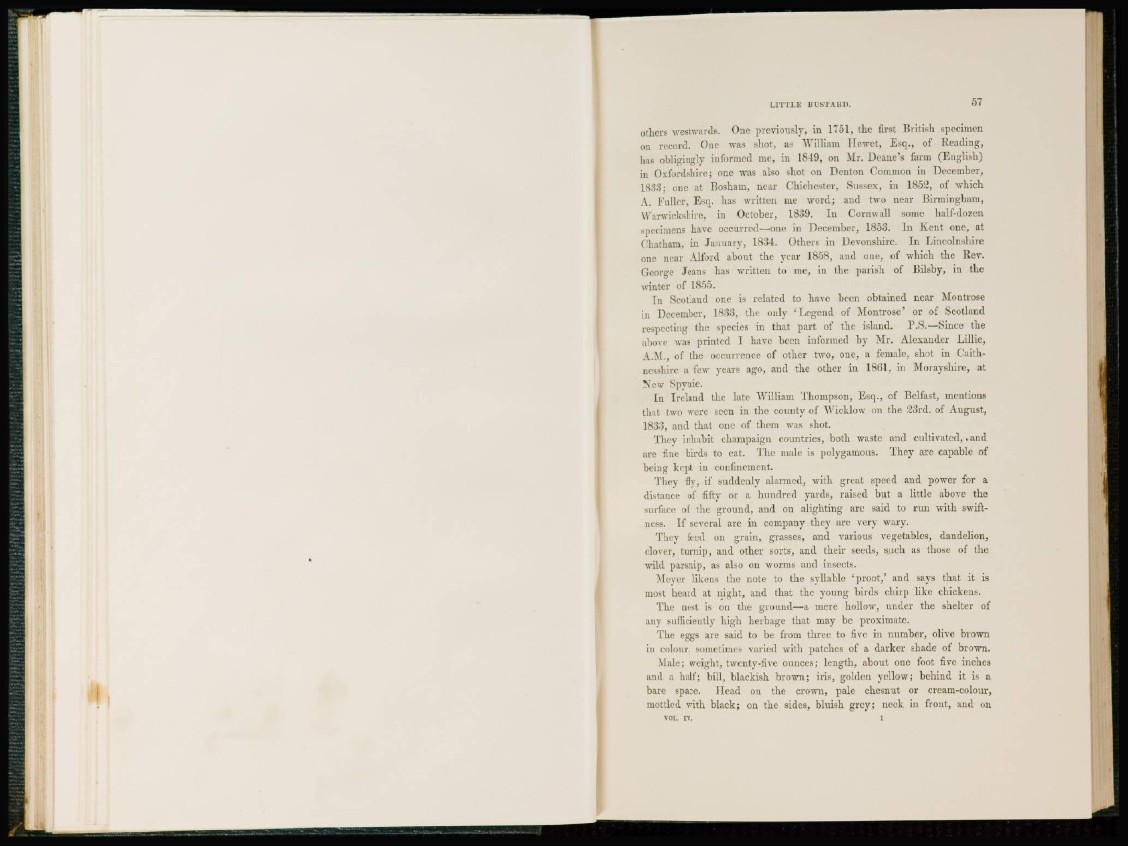
others westwards. One previously, in 1751, the first British specimen
on record. One was shot, as William Ifewct, Esq., of Reading,
lias obligingly informed me, in 1849, on Mr. Deane's farm (English)
in Oxfordshire; one was also shot on Denton Common in December,
18-33; one at Bosham, near Chichester, Sussex, in 1852, of which
A. Fuller, Esq. has written me word; and two near Birmingham,
Warwickshire, in October, 1839. In Cornwall some half-dozen
specimens have occurred—one in December, 1853. In Kent one, at
Chatham, in January, 1834. Others in Devonshire. In Lincolnshire
one near Alford about the year 1858, and one, of which the Rev.
George Jeans has written to me, in the parish of Bilsby, in the
winter of 1855.
In Scotland one is related to have been obtained near Montrose
in December, 1833, the only ' L e g e n d of Montrose' or of Scotland
respecting the species in that part of the island. P.S.—Since the
above was printed I have been informed by Mr. Alexander Lilhe,
A.M., of the occurrence of other two, one, a female, shot in Caithncsshire
a few years ago, and the other in 1801, in Morayshire, at
New Spynie.
In Ireland the late William Thompson, Esq., of Belfast, mentions
that two were seen in the county of Wicklow on the 23rd. of August,
1833, and that one of them was shot.
They inhabit champaign countries, both waste and cultivated, . a nd
are fine birds to cat. The male is polygamous. They are capable of
being kept in confinement.
They fly, if suddenly alarmed, with great speed and power for a
distance of fifty or a hundred yards, raised but a little above the
surface of the ground, and on alighting are said to run with swiftin
ss. If several are in company they are very wary.
They feed on grain, grasses, and various vegetables, dandelion,
clover, turnip, and other sorts, and their seeds, such as those of the
wild parsnip, as also on worms and insects.
Meyer likens the note to the syllable 'proot,' and says that it is
most heard at night, and that the young birds chirp like chickens.
The nest is on the ground—a mere hollow, under the shelter of
any sufficiently high herbage that may be proximate.
The eggs are said to be from three to five in number, olive brown
in colour, sometimes varied with patches of a darker shade of brown.
Male; weight, twenty-five ounces; length, about one foot five inches
and a half; bill, blackish brown; iris, golden yellow; behind it is a
bare space. Head on the crown, pale chesnut or cream-colour,
mottled with black; on the sides, bluish grey; neck in front, and on
VOL. IV. i